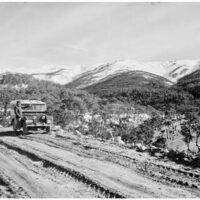Professor Peter Newman is a professor of sustainability at Curtin University in Western Australia. He is a long passionate advocate for public transport in general and rail transport, trains and trams, in particular. He recently, to the surprise of many, came out in support of trackless tramps. Professor Newman joins us on the line now. Professor thank you very much for your time. Thank you. What is a trackless stream.
An initial transcript from the start of the interview
PN: Well we invented the term but it covers quite a few of the bus projects that are trying to be more tram like and in Europe they tend to be electric buses with a bit added on a bit longer a bit more autonomous but this one that we are rather fascinated with has come out of China but it’s come from a real background. It comes from high speed rail where they have taken six of the innovations that have worked very well in China because the high speed rail has to be autonomous and it has put it in a bus and created a new kind of device that is more tram like. And it seems to me to do all sort of things that light rail does but as a tenth of the cost it’s highly autonomous and very fixed in its track that it’s optically guided it doesn’t need a steel rail to run on and it is very steady very hydraulically supported and stabilized with the precision of entry into a station that allows wheelchair access and that kind of thing.
PN So it’s it’s tram like but at a tenth of the cost which is huge because you don’t have to dig up the streets and replace all the services underneath the train.
DB: So it’s tram like in the sense that you can run a number of carriages together. It’s got a good ride it does it well of course it doesn’t have as much noise or smoothness to ride for passengers.
PN: Yes all of that. We went to China to ride this and it was significantly better in its ride quality than any bus I’ve ever been on and I’ve read quite a few and it’s got three carriages. So they say I could take 300 is probably more like 220 something like that. Maximum load but they’re already getting three car length buses. So it’s but it’s more than that it’s the ride quality that distinguishes it and of course it’s all electric. It’s got batteries on the roof so you don’t need the catenary and you don’t need the track.
PN: That is what significantly makes it cheaper. It’s also a lot lighter than a bus because it doesn’t have the diesel engine in for a start but it’s also about the particular wheel structure it’s got that’s more Bogie like. And all of that is done in a way that enables it to have the quality of ride that can make it very attractive transport system but also an attractive developer system. In other words, you would want to build around it at stations.






